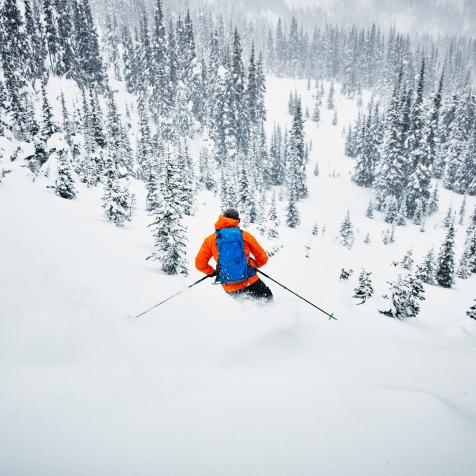
Johnny Eriksson / 500px
Top Tips for Seeking Out Nature’s Best Winter Wildlife
It might be cold outside, but that doesn’t stop some of nature’s most beautiful wildlife from venturing out. In fact, there are a number of animals who are far more active during the winter months. Here's your guide on how and where to spot them. And don’t forget your binoculars.
Wolves

Paolo Carnassale
The best time to see wolves is during the winter, advises the National Park Service, as their dark colors mean they stand out in the snow. Head to Yellowstone Park, and go north, which is the relatively less visited side of the park. At Lamar Valley, dubbed the “Serengeti” due to its open plains and vast herds of wildlife, there’s a better chance of a wolf sighting due to the amount of of the animals’ prey in the park. Head out at dawn and dusk and listen out for the yip of coyotes – wolves usually join in with howling, which is longer and lower pitched than the sound of coyotes. If you stake out nearby a carcass, you’re bound to see wolves – alongside other predators – but just make sure you’re far enough away and out of danger. Alternatively, book a wolf-spotting tour with Brushbuck Wildlife tours and tag along with an experienced guide.
Foxes

Pim Leijen
Head for Vermont and New Hampshire and aim for open fields to spot red foxes on the move, while gray foxes prefer the bushy, boundary areas where forests and fields meet. Keep your eyes peeled for tracks crisscrossing through the snow, and having a dog tagging along helps – they’ll pick up the scent easily.
Elk

Rebecca Harding of Quail Run Photography
There are a lot of elk in Colorado; with 280,000 of the animals the state actually has the largest elk population in North America. Unlike birds who fly south for the winter, elk are migrators by altitude. As the weather gets colder, the herds move down to larger meadows and golf courses. There are a few spots that are particularly good for sighting elk: Moraine Park, Lake Estes Trail
Snowy Owls

Vicki Jauron, Babylon and Beyond Photography
They can be tricky to track as, according to nature experts, they don’t have easy to trace migration patterns and are instead nomadic. They’re also listed as a “vulnerable” species, with some biologists estimating there are just 30,000 left in the wild.
During the winter, snowy owls nest on tundras in the Arctic, particularly next to coastal areas. Focus on the prairies of southern Canada and the northern United States to spot these owls. Keep an eye on eBird listings for nearby sightings, or keep your fingers crossed for one of the “invasions” that appear to happen every four years where some individuals in south0eastern Canada see up to 200 a day, and people as far east as Bermuda spot them. Airports are also a favorite feeding ground for owls, as they have wide open areas of grassland which are populated by rodents – prey for owls. Extra cold seasons where there has been lots of snowfall create the perfect conditions for lemmings to breed, meaning there’ll be more snowy owls around too.




































































